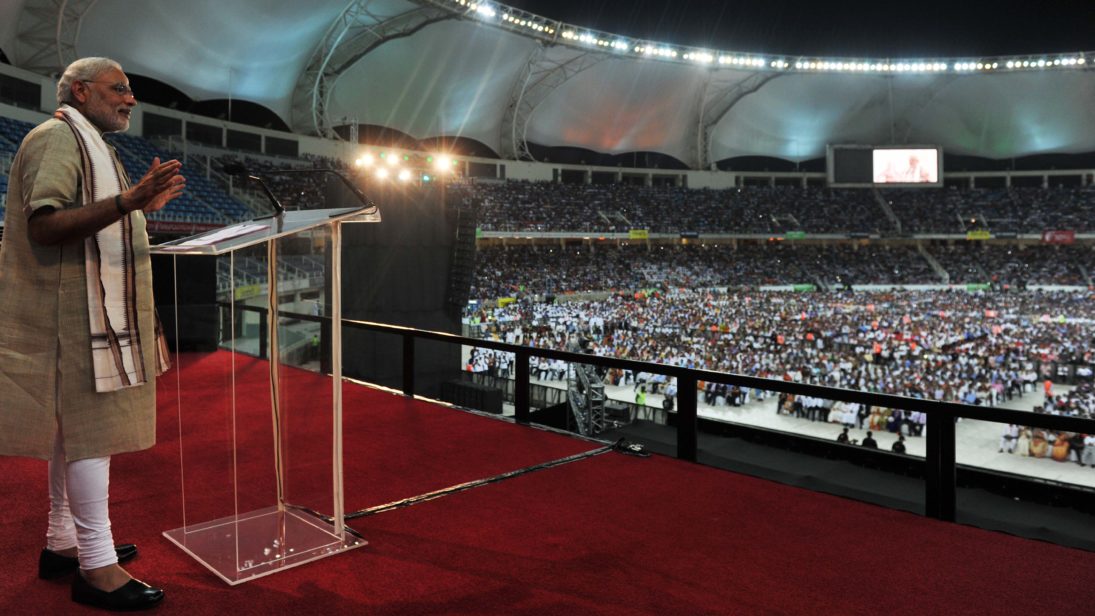
The recent phone call (on February 13) made by Indian Prime Minister, Narendra Modi to his Pakistani counterpart, Nawaz Sharif, is being considered an important icebreaker. While Prime Minister Narendra Modi called Prime Minister Nawaz Sharif to wish his team good luck in the 2015 Cricket World Cup, the Indian PM also made a reference to the Pakistani PM having played a warm-up match alongside his current political rival, PTI Chief Imran Khan in 1987. The latter happened to be captain. India’s first match happened to be against Pakistan on February 15 and they won it convincingly.
If one were to look beyond cricket, Modi also used the phone call to mention to Sharif that his newly appointed Foreign Secretary, S Jaishankar, is scheduled to visit SAARC countries, including Pakistan. The Indian PM also called other leaders of SAARC countries, including PM Sheikh Hasina of Bangladesh, President Maithripala Sirisena of Sri Lanka, and President Ashraf Ghani of Afghanistan.
Many in India have been surprised by Modi’s decision to send the foreign secretary to Pakistan, since talks were suspended in August, and believe that the fact that this decision came less than 24 hours after the call from U.S. President Barack Obama clearly points to the fact that it was due to U.S. pressure.
Others believe that this move vis-à-vis Pakistan was due to pressure from the People’s Democratic Party (PDP), with whom the BJP is likely to form a government in Kashmir. The PDP leader, Mufti Mohammed Sayeed, has favored dialogue with Pakistan and the Srinagar—Muzzafarabad bus service, which began in 2005, was his brainchild. Saeed was quick to praise Modi for his overture towards Pakistan.
It would be pertinent to mention here that Sharif and Modi also did not meet on the sidelines of the UNGA or SAARC Summit, something of an unwritten convention over the past few years. The two did have an informal meeting on the sides, which according to some news reports, was utilized by both prime ministers to informally discuss the potential for resuming engagement and the appropriate time for doing so.
In the aftermath of the Peshawar attack, the Indian PM was quick to call Sharif and offer his condolences. More recently, former Pakistan NSA, Mahmud Ali Durrani, visited India and held talks with Indian NSA, Ajit Doval, while Petroleum Minister Dharmendra Pradhan attended the Turkmenistan-Afghanistan-Pakistan-India pipeline meeting in Islamabad.
It is tough to say with certainty whether any specific reason was responsible for the Prime Minister’s decision to send his foreign secretary. It would be important to mention that it is not for the first time that cricket has helped in playing an important role in diplomacy between both countries. In 2011, PM Dr. Manmohan Singh invited his counterpart Yousuf Raza Gilani to Mohali for the semi-final of the World Cup. This paved the way for re-engagement between both countries and some significant strides were made in the realm of trade and commerce. The level of trade also witnessed an increase, though Pakistan has still not fulfilled its promise of providing MFN status to India. In 2005, Dr. Singh invited Pakistani President Pervez Musharraf for an Indo-Pak cricket series. Nearly three decades ago, in 1987, General Zia-ul Haq decided to visit India to watch a test match being played at SAARC.
In addition to cricket, SAARC, which has been dubbed a toothless organization and a failure due to bickering between India and Pakistan, has ironically played an important role in resumption of engagement between India and Pakistan. In August 1998, barely three months after both countries carried out nuclear tests, then-PM Atal Bihari Vajpayee met his counterpart Nawaz Sharif, the current incumbent, paving the way for Vajpayee’s Lahore initiative and the Lahore Memorandum of Understanding in February 1999. In 2004, Vajpayee visited Pakistan for the SAARC Summit and had a reasonably productive meeting with then-President General Pervez Musharraf. The two also jointly came up with the Islamabad Declaration, whereby Pakistan assured that it would ensure that its territory is not used for any terrorist activity targeting India. For its part, India expressed its willingness to discuss the Kashmir issue. In 2010, PM Dr. Manmohan Singh’s met with his then-counterpart Yousuf Raza Gilani in Thimphu on the sidelines of the SAARC Summit and put forth India’s concerns, especially those regarding terrorism. Resumption of talks at the Foreign Secretary and Foreign Minister level was also discussed. More recently, PM Modi had invited all SAARC leaders for his swearing-in and Nawaz Sharif attended the ceremony, much to the chagrin of some in Pakistan.
In conclusion, Modi has clearly shown that he is not averse to engagement with Pakistan, but clearly wants to do so in an incremental manner, and the SAARC framework and cricket diplomacy provide him an opportunity to do so.
***